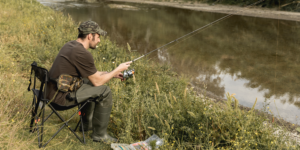Turkey calling can be the difference between a successful hunt or going home empty handed. But the good news is that you do not need to be a pro to call in a gobbling tom, anyone can do it once you find the right call or calls for you.
Don’t miss our full guide to turkey hunting.
Why limit yourself to public land when there are millions of acres of private land to explore.
What is Turkey Calling and Why is it Important?
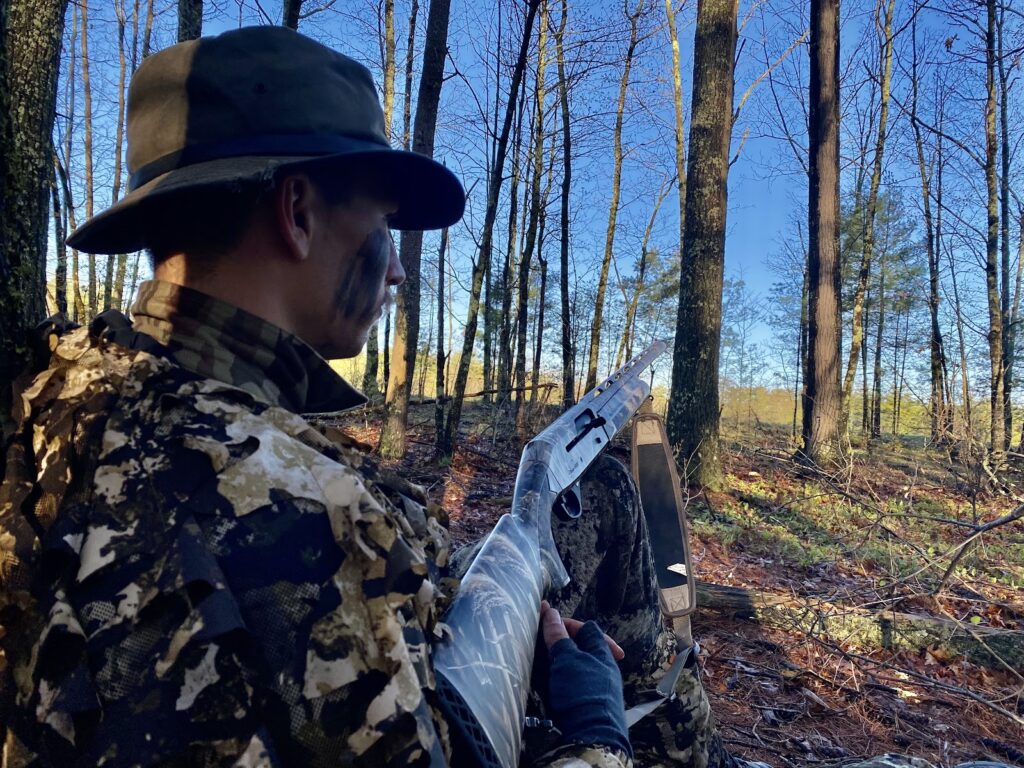
Turkey calling is a technique we use as hunters to attract wild turkeys towards our hunting location using various vocalizations and sounds that mimic the calls of turkeys. Turkey calling is important because it helps us lure turkeys within shooting range, making it easier to fill our tag.
The reason turkey hunting can be so fun and even downright addicting is the fact that you get to interact with a wild animal and elicit a response and action from that animal. The main way you do that is through mimicking that noise of another turkey or in other words- Turkey calling. It takes time and practice but anyone can get good at calling turkeys.
Turkey calling can be a challenging skill to master, as it requires an understanding of turkey behavior and the ability to accurately replicate their calls. What is great about turkey hunting today is that it has never been easier to learn about turkey calling and every year the quality of turkey calls increases which allows even the worst turkey callers to recreate an accurate turkey yelp.
Types of Turkey Calls
There are several different types of turkey calls, including mouth calls, box calls and slate calls. Each type of call produces a unique sound that mimics the vocalizations of turkeys, such as yelps, clucks, purrs, and gobbles. Every call has its time and place when turkey hunting so a lot of the time you will see hunters, including me, carrying around all three types of calls and using them depending on the situation.
Box Calls
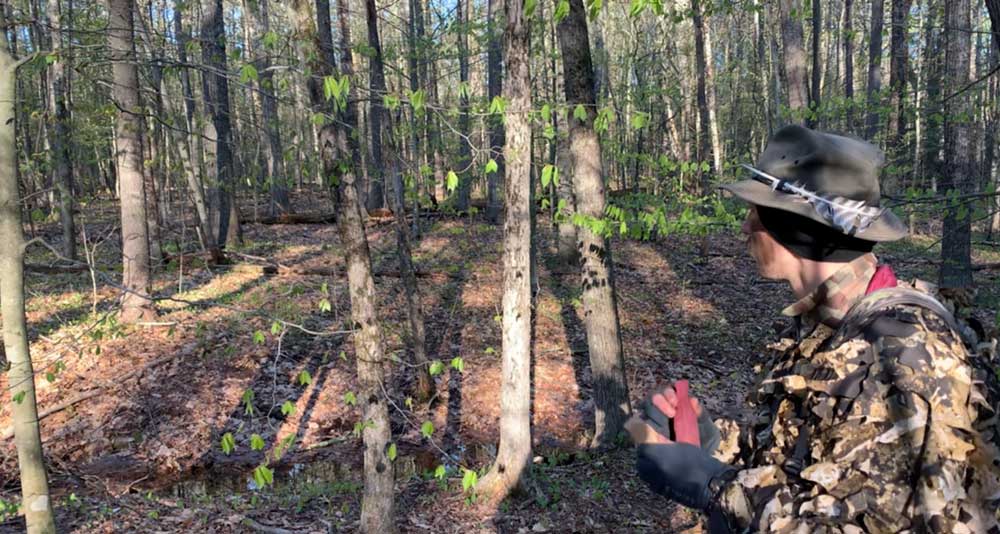
A turkey box call is a type of turkey call that uses a wooden box and a striker(the lid) to produce sounds that mimic the vocalizations of wild turkeys. The box is typically made from wood, such as cedar, walnut, or cherry, and has a lid that is held in place by tension screws. The striker/lid, which is often made of wood or plastic, is used to create friction against the paddle, producing a variety of turkey sounds.
To use a turkey box call, the hunter holds the box in one hand and the striker in the other hand. By applying varying amounts of pressure and speed with the striker, the hunter can produce a wide range of turkey sounds, including yelps, clucks, purrs, and gobbles.
Turkey box calls are my favorite calls, meaning if I could only bring one type of call into the woods with me it would be a box call. The first reason is the repeatability, when practicing your turkey calling you will find a sound or noise that seems perfect but once you get in the field and try to make that same noise it just does not have that same bite to it. With a box call I find it extremely easy to make great turkey sounds even under the pressure of a gobbler coming my way. I use box calls after I have located a bird and I really want to sweet talk him and get him headed in my direction. The only limitation as a beginner using a box call is that you might not be able to make all of the turkey sounds but you will be able to make the important calls really well in my opinion.
Mouth Calls
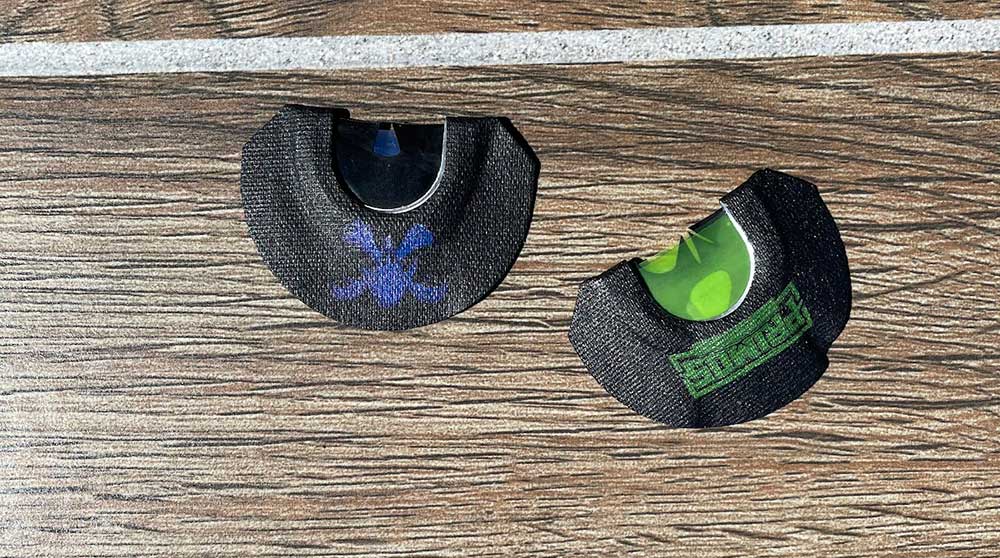
A turkey mouth call is made up of a small latex or silicone reed that is placed between the hunter’s tongue and the roof of their mouth. By manipulating air pressure and position of their tongue, you can make almost every turkey sound imaginable. Turkey mouth calls are a popular choice among hunters because they are compact, lightweight, and easy to use, making them ideal for calling turkeys in close for a successful hunt.
A mouth call is more challenging to learn to use but with a moderate amount of practice you can become great at using a mouth call. They are extremely easy to practice with because you don’t need to use your hands so my favorite time to practice is when I’m driving around in my car.
Mouth calls are an essential call for turkey hunting because they require almost no movement to make a realistic noise which is perfect for when a gobbler is within eye shot but is not yet in shooting range. When I was turkey hunting in New Hampshire I had a bird hang up 60 yards away and every time I moved trying to get my gun up he would stick his head in the air and look right at me. When he got skittish like that I used my mouth call to calm him down and he eventually worked his way down into shotgun range and I sealed the deal.
Slate Calls
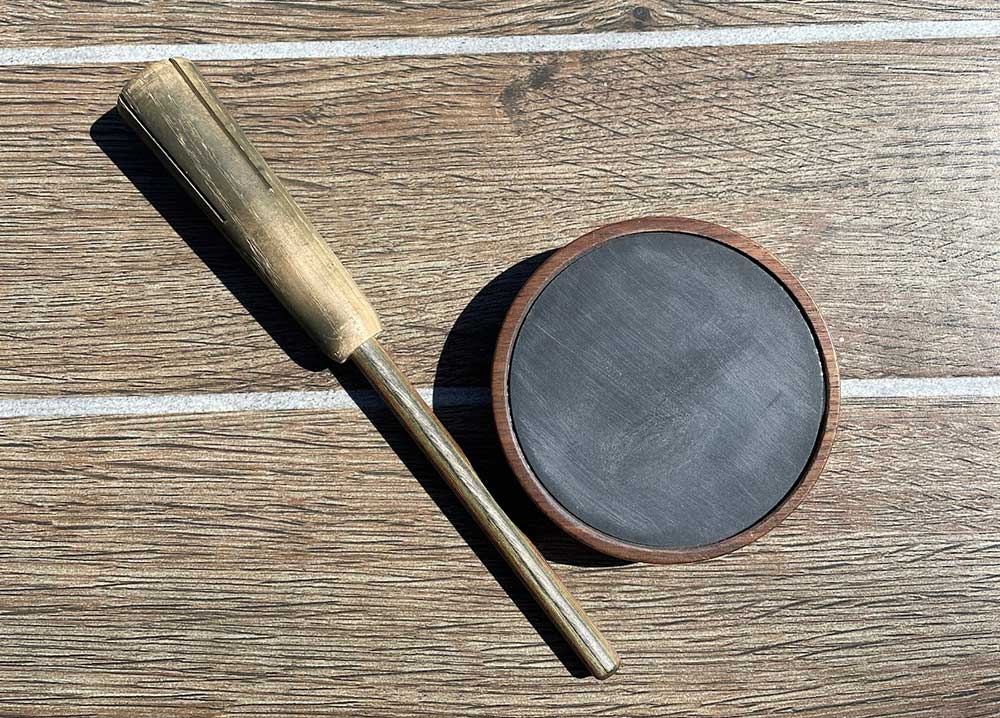
A turkey slate call gets its name from the material used to make the call, which is a type of slate rock. To use a slate call, a hunter typically holds a small wooden striker against the slate surface and moves it in a circular motion, creating a series of yelps, clucks, and purrs that realistically imitates a hen turkey. The tone and volume of the call can vary depending on how the striker is held and how much pressure is applied. The sound produced by a slate call is soft and realistic, which can be effective in calling turkeys that might otherwise be wary of more artificial-sounding calls.
A slate call in the right hands can be just as deadly or more than box calls or mouth calls. In my opinion slate calls, also called pot calls, are the most challenging calls to get just right. They are also the most versatile in making the largest range of all turkey noises. The best way I think I can describe a slate call is that a slate call is a very finesse call. You can make it make the exact tone, pitch and volume that you want, but you have to know that slate like the back of your hand in order to be able to make that one call at the exact right moment while out in the woods. There are a lot of long time, old school turkey hunters who swear by their slate and would be happy to tell you they kill most of their birds because of their sweet slate, and I wholeheartedly believe them.
The hassle free way to monetize your acreage.
Techniques for Effective Turkey Calling
Basic Sounds
- Cluck: Turkeys use this sound to communicate with each other. It’s a short, sharp noise that can be used to express a range of emotions, from contentment to alarm. When hunting we use clucks to act like a group of turkeys just hanging out quietly clucking to one another.
- Purr: This is a soft, rolling noise that turkeys make when they’re feeling relaxed and content. Purrs are perfect when you want to sound extra realistic and are created easily on a slate call.
- Yelp: A turkey yelp is a high-pitched noise that turkeys make, usually as a form of communication. It’s a longer, more drawn-out sound than a cluck, and it can have different meanings depending on the context in which it’s used. A yelp can be used as a greeting between turkeys or to locate other turkeys in the area. It can also be a warning call, signaling to other turkeys that danger may be present. Additionally, hens will use a yelp to call their poults (young chicks) back to them.
- Putt: This is a short, low-pitched noise that turkeys make when they’re feeling threatened or warning other turkeys of danger. You do not want to hear a putt while out in the woods it means a hen turkey has spotted you and is now alerting other turkeys of danger
- Kee-kee: This is a high-pitched, two-note whistle that young turkeys use to communicate with each other. It’s often used by hens to locate their poults (young chicks).
Combining Basic Sounds
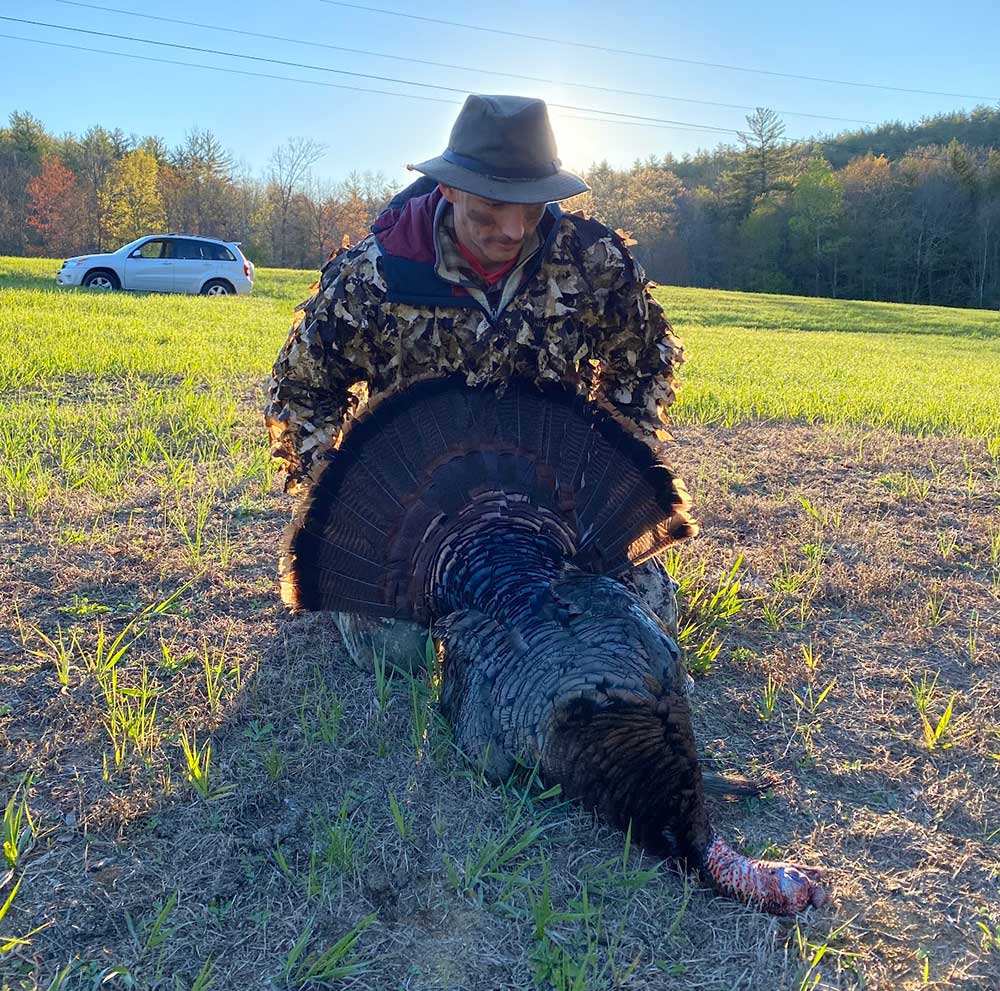
Clucks, purrs and yelps are the three main calls you will need to learn with each of your calls in order to master turkey calling. The good news is that you don’t need to be able to do all of that to kill a turkey. Many of the most weary Toms have been killed with a simple cluck. In terms of trying to get a gobbler to respond, always start with a simple cluck, and if that doesn’t work you can combine 2-5 clucks and then a purr then 2-3 clucks. If that doesn’t work then I would use a yelp, and to escalate that to demand a response I yelp five times cluck 2-3 then yelp five times. Those combinations of sounds will almost always get a gobbler fired if he is in the area and willing to play the game. My last resort is combining all three sounds to try and get a gobbler to respond and sometimes that is what it takes to get a stubborn gobbler to react.
Mastering Different Calls
Each of the three calls described in this article pose their own set of challenges, I would have to recommend that on a box call you should focus on mastering the yelp, a good box call will make the sweetest sounding yelp you have ever heard after a few practices. When mastering a slate call you should begin with making the best sounding cluck, slate calls are the perfect tool for making every tone of cluck you could ever want. Slate calls also easily make great sounding purrs that you can use in between those clucks. For a mouth call you should focus on making a cluck as well because in those final moments you need that gobbler to take a few extra steps that cluck with a mouth call will be what you need to seal the deal.
Common Mistakes to Avoid
The first mistake I think people make is over calling, there is a fine line between sounding like a hen turkey and sounding like a hunter. After a bird has been pressured by other hunters they will get weary of what sounds like a hen yelping from the same area every five minutes. I always recommend hunters to try and call as little as possible, this keeps it realistic and it also keeps the tom believing it’s a real hen because he doesn’t have enough time to pick out if it is not a real turkey call.
The next mistake is staying in one too long, there is a right and a wrong time to keep still. If you got a bird to gobble one hundred to one hundred and fifty yards away and he hasn’t gobbled for thirty or so minutes stick it out because he very well might be sneaking his way into your set up. He is just taking his time. On the flip side if you heard a gobbler at that same distance and over thirty minutes he got farther and farther away, it’s time to pick up and try to cut him off. The closer you are to a gobbler when you make your first call the more likely he is to respond and head your way.
Using Turkey Calls to Improve Your Turkey Hunt
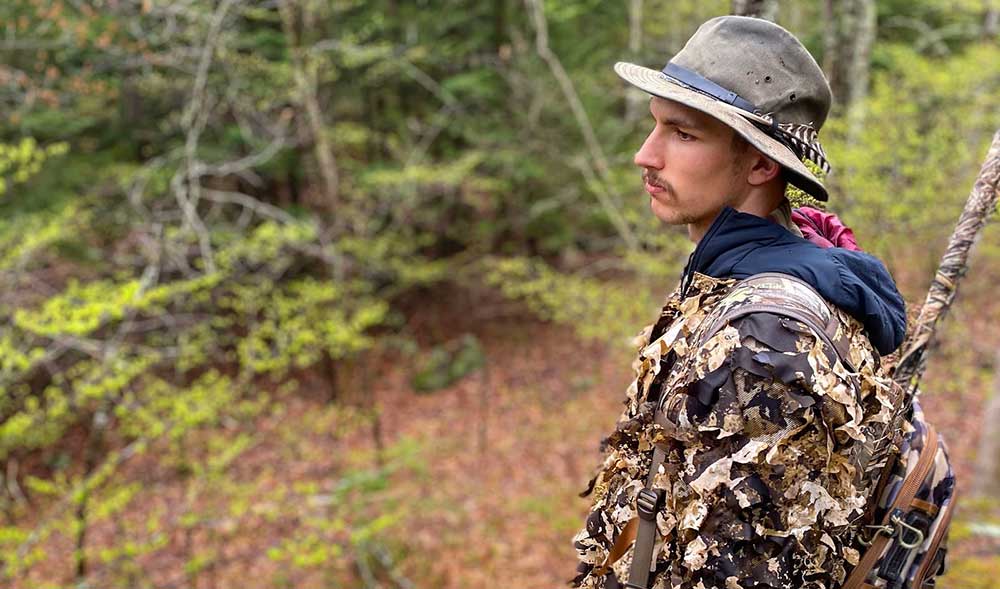
Turkey calling can make or break your hunt and we want to do everything we can to make sure we are giving ourselves the best chance to harvest a bird and calls are going to be our biggest advantage. Turkeys have “moods” some days it might seem like the are gobbling every ten seconds and other days you can hunt all day and never hear a gobble and it is up to us to use the right call in each situation. On days where the hunting is good and you have a couple of gobblers to choose to chase, your first goal is to get one’s attention. I normally do this by starting off with a few quiet yelps on a slate and if no one responds I pull my box call and hit them with five loud yelps, pause then five ]more. This normally gets at least one toms attention. Once I get a response I go back to quietly yelping on my slate maybe one or two yelps every couple of minutes and before you know it the bird is on his way and in your lap. If the tom does not seem to be getting closer I will use the loud box call again until I know he is closing the distance and if he does not seem interested I will quietly get up and try to get as close as i can to him before making a call again.
On days where nothing seems to be happening in the woods you are going to have to be creative and sneaky. It is important to match the tone of the woods with your calling, so on quiet days you may only need to quietly cluck on your slate call to get a response but be ready because that gobbler might already be on top of you when you get that first response.
Reasons Your Turkey Call isn’t Working
Each call has its own unique reason for not working and while the reasons may vary for your individual case I would say a majority of your issues can be solved with the following solutions assuming the call has not been physically damaged such as cracked, ripped or split.
If your box call is not working this is a sign that it either has too much chalk on the lid or not enough. The chalk on the underside of the lid helps create friction which in turn creates the turkey sound. Most of the time when my box call is out of tune I rub some chalk on that striker and it sounds good as new. You can find chalk online or wherever you get your box call. Sometimes if you buy a brand new call it might have too much chalk and it will take a few sessions to season in that box call.
If your mouth call is not working it could be the fact that the latex is too tight, you can solve this by calling on it a ton and generally just having it in your mouth to loosen that latex. If it is an old mouth call then the opposite might be occurring where the latex has loosened up over time and lost its edge. If this is the issue it is time to get a new mouth call.
If your slate is not working then your slate is most likely too smooth for you striker to create enough friction. To solve this issue take a high grit sandpaper and lightly sand the top of your slate in the same horizontal direction(do not make circles) then you can move your striker vertically against the slate and it should start to work for you.
Why limit yourself to public land when there are millions of acres of private land to explore.
FAQ
What is the best call for turkey hunting?
In my opinion the best call you can bring into the woods is a good box call. Box calls make the smoothest and sweetest sounding hen call with ease.
Can you call turkeys without a call?
Yes! There are a few different noises you can make, the first being scratching using a hand or stick. This mimics a turkey scratching the ground looking for worms and bugs to eat. Another noise is called “spitting” which is a noise toms make when strutting, you make that noise by making a cartoonish sounding spit noise followed by a fast 2 second hum starting with low pitch eding with a high pitch. Both of these noises will make a close bird want to check out your exact location in search of the other turkey you are pretending to be.
How do you make a turkey call?
The easiest turkey call to make is a slate call, you dont have to use slate rock, some people use glass but the key is to rough up the surface with piece of sandpaper. Then for your striker you should find and use a good hard wood it might take some time to shape it correctly but it will work.
How do you clean a turkey call?
Cleaning turkey calls is very easy, for mouth calls you should rinse them off in luke warm water and let them air dry on a paper towel. For slate calls us a rag to wipe of debris. And for box call you want to protect them as much as possible because getting them wet might actually change the pitch. The upkeep for box calls is adding chalk to the underside of the lid/striker.
What is the difference between a box call and a slate call?
Slate calls are often considered easier to use subtle turkey sounds, while box calls are louder and can create a wider range of sounds. Box calls can be more versatile and effective in open areas or windy conditions, while slate calls may work better in areas with more cover or where a quieter call is needed.

